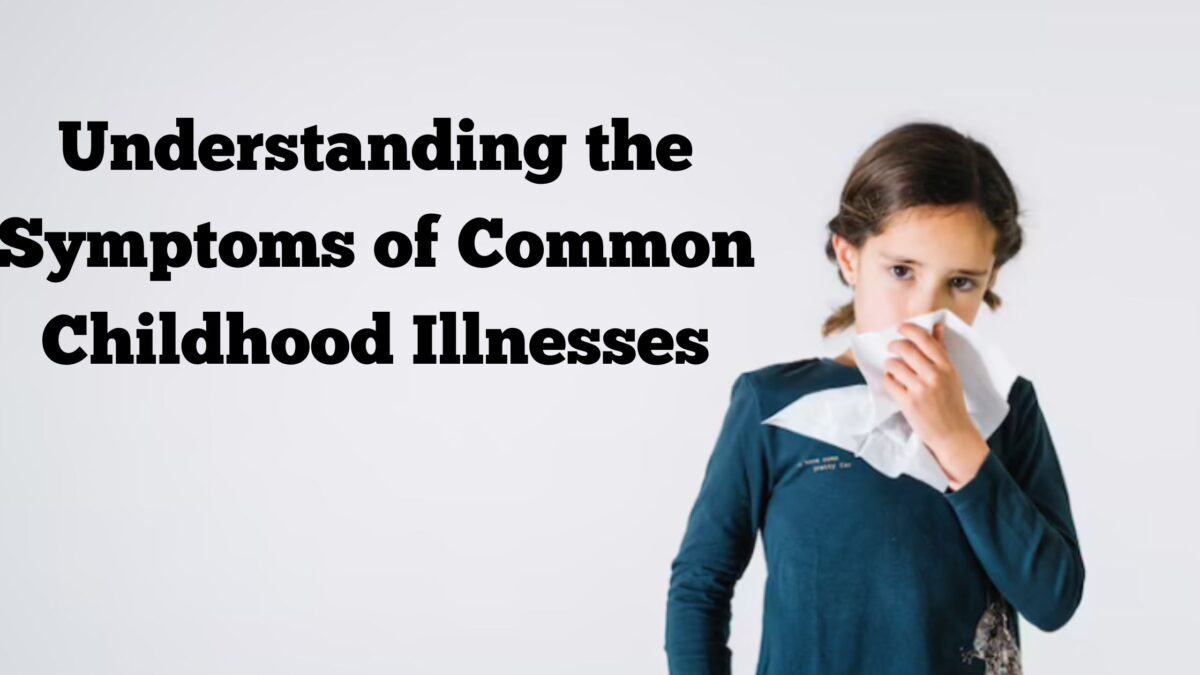Children are prone to catching illnesses and infections due to their developing immune systems. As a result, it is important for parents and caregivers to understand the symptoms of common childhood illnesses. This knowledge can help them identify illnesses early and seek appropriate medical attention. In this blog, we will discuss some of the most common childhood illnesses, their symptoms, and how to manage them.
Common Childhood Illnesses and Their Symptoms
1. Common Cold:

The common cold is a viral infection that affects the upper respiratory system. It is a very common illness in children, especially during the winter months. The symptoms of a cold can include:
- Runny or stuffy nose
- Cough
- Sore throat
- Headache
- Sneezing
- Mild fever
- Fatigue
Treatment: The common cold is usually self-limiting and will resolve on its own within a week or two. Treatment is aimed at relieving symptoms, such as using saline nose drops or sprays to help clear congestion, and giving the child plenty of fluids to prevent dehydration. Over-the-counter pain relievers such as acetaminophen can be given to relieve fever and discomfort.
2. Flu:

The flu is a viral infection that is more severe than the common cold. It can cause fever, body aches, and fatigue, and can lead to complications such as pneumonia. The symptoms of the flu can include:
- High fever
- Body aches
- Chills
- Fatigue
- Headache
- Sore throat
- Dry cough
Treatment: Like the common cold, the flu is usually self-limiting and will resolve on its own within a week or two. However, antiviral medication may be prescribed to help reduce the severity and duration of symptoms. Over-the-counter pain relievers such as acetaminophen can be given to relieve fever and discomfort. It is also important for the child to get plenty of rest and fluids.
3. Strep Throat:

Strep throat is a bacterial infection that affects the throat and tonsils. It is more common in children between the ages of 5 and 15. The symptoms of strep throat can include:
- Sore throat
- Difficulty swallowing
- Red and swollen tonsils
- White patches on the tonsils
- Fever
- Headache
- Nausea and vomiting
Treatment: Strep throat is treated with antibiotics, which can help reduce the severity and duration of symptoms. Over-the-counter pain relievers such as acetaminophen can be given to relieve fever and discomfort. It is also important for the child to get plenty of rest and fluids.
4. Ear Infections:

Ear infections are common in young children, especially those between the ages of 6 months and 2 years. They are usually caused by a bacterial or viral infection in the middle ear. The symptoms of an ear infection can include:
- Ear pain
- Tugging or pulling at the ear
- Difficulty sleeping
- Fever
- Irritability
- Loss of appetite
- Drainage from the ear (if the eardrum has ruptured)
Treatment: Ear infections are usually treated with antibiotics, which can help reduce the severity and duration of symptoms. Over-the-counter pain relievers such as acetaminophen can be given to relieve fever and discomfort. It is also important for the child to get plenty of rest and fluids.









